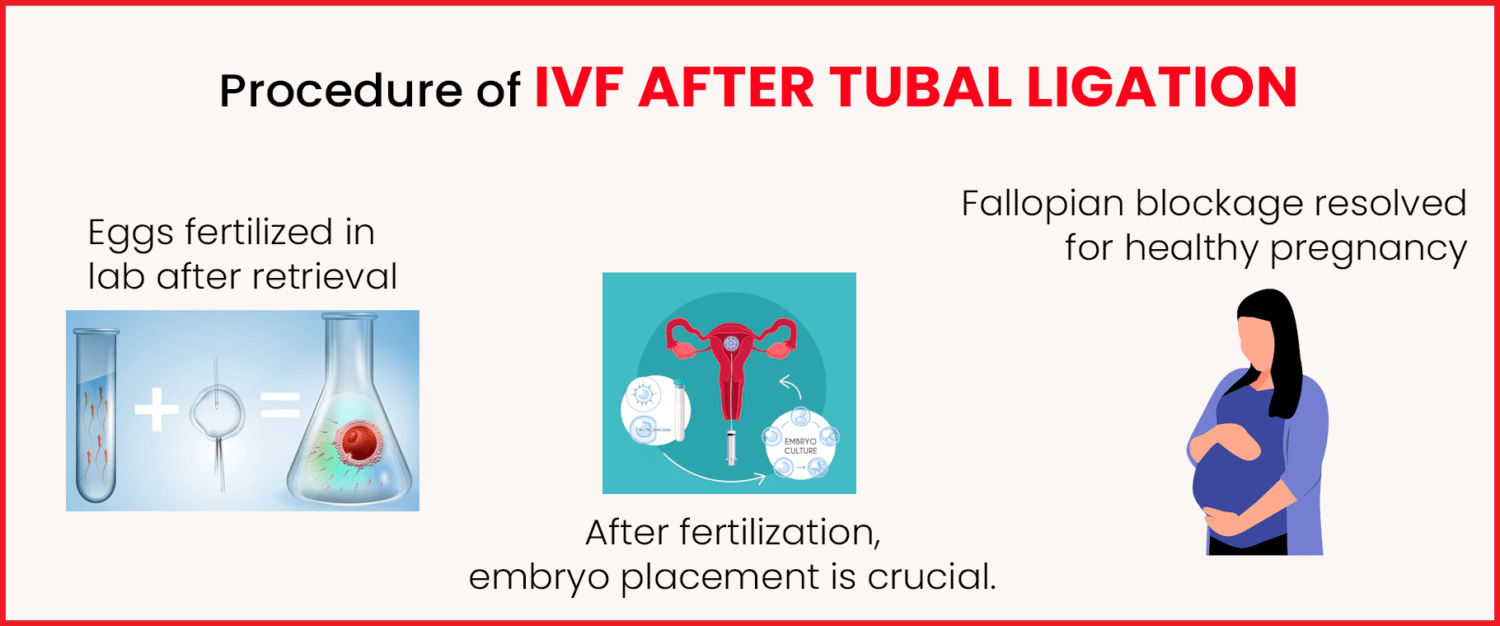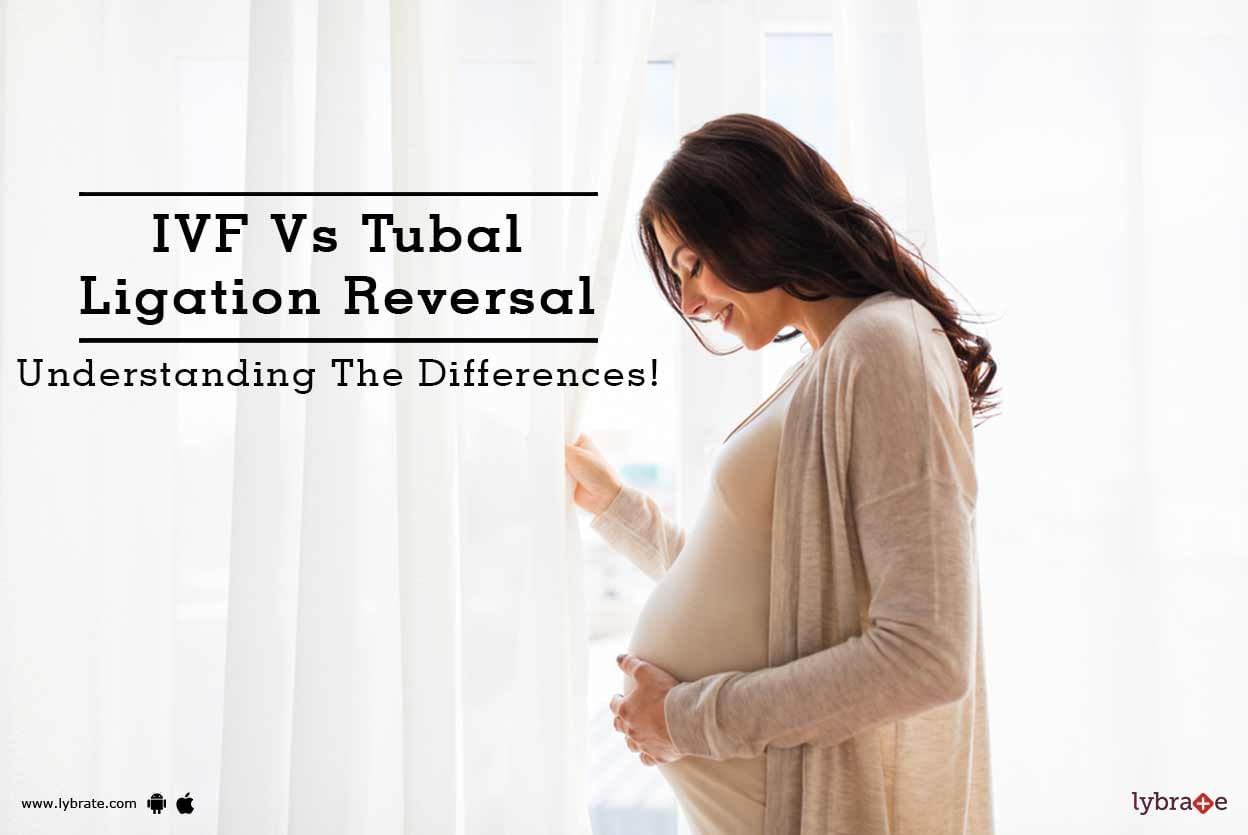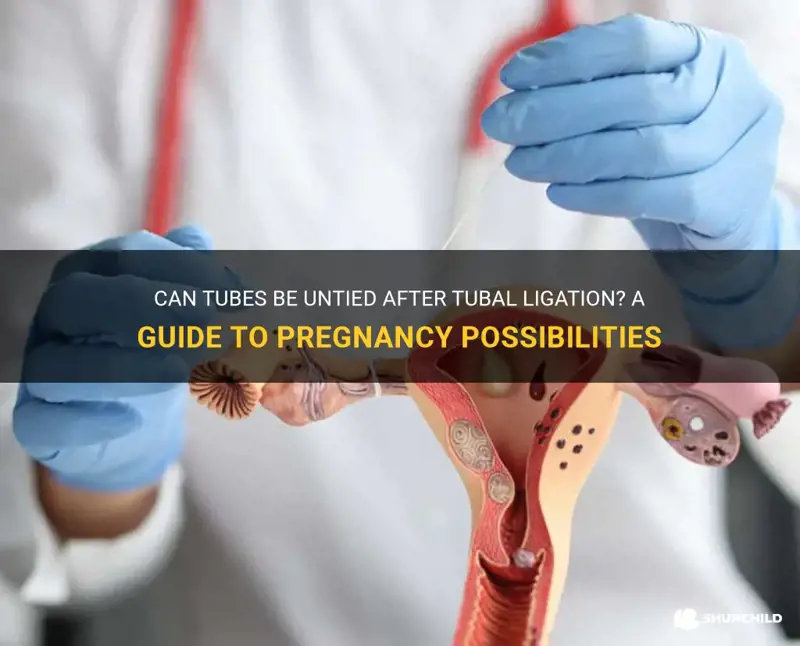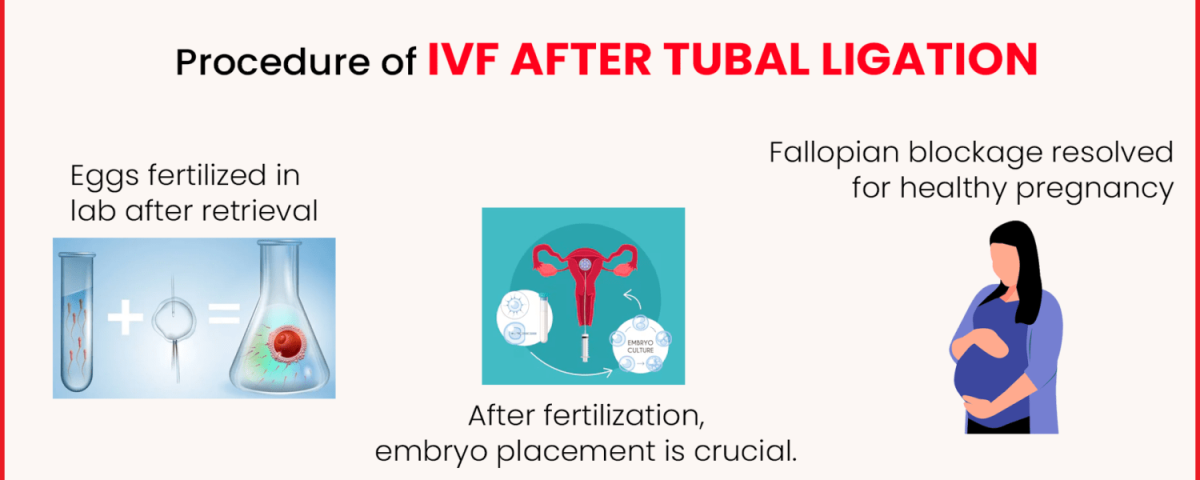
The IVF Ban Debate: What It Means for You and Your Future Family
April 21, 2025
Finding the Best IVF Doctors in Houston: Your Ultimate Guide to Fertility Experts
April 22, 2025IVF After Tubal Ligation: Your Guide to Growing Your Family Again
So, you’ve had your tubes tied, thinking your family-building days were behind you. But now, life’s thrown a curveball—maybe a new partner, a change of heart, or just that itch to hear tiny feet pattering around again. You’re wondering, “Can I still have a baby after tubal ligation?” Spoiler alert: Yes, you can! And one of the most exciting options is in vitro fertilization (IVF). This isn’t just a medical procedure—it’s a journey full of hope, surprises, and yes, a few secrets most people don’t talk about. Let’s dive into everything you need to know about IVF after tubal ligation, from the nitty-gritty science to the little-known quirks that’ll make you feel like an insider.
What Is Tubal Ligation, Anyway?
Tubal ligation—often called “getting your tubes tied”—is a surgery where your fallopian tubes are blocked, cut, or sealed to stop eggs from meeting sperm. It’s like putting up a “No Trespassing” sign on the road to pregnancy. Doctors usually pitch it as a permanent birth control option, and it’s super common—over 600,000 women in the U.S. get it every year. Most choose it after they’ve had all the kids they want, thinking, “I’m done!”
But here’s the twist: life doesn’t always stick to the script. Maybe you’ve met someone new who’s dreaming of a baby with you. Or perhaps you’re feeling that empty-nest vibe way sooner than expected. Whatever the reason, tubal ligation doesn’t have to be the end of your story. IVF can swoop in like a superhero, bypassing those tied tubes entirely.

Why IVF? The Cool Way It Works Around Tied Tubes
IVF is like a backstage pass to pregnancy. Normally, your fallopian tubes are the VIP route where eggs and sperm meet up for the big fertilization party. But after tubal ligation, that route’s closed. No problem—IVF skips it altogether! Here’s the basic rundown:
- Step 1: Egg Boosting – Doctors give you meds to wake up your ovaries and get them producing multiple eggs. Think of it like a farmer coaxing extra apples from a tree.
- Step 2: Egg Pickup – They gently collect those eggs with a tiny needle (don’t worry, you’re asleep for this part!).
- Step 3: Lab Magic – In a lab, your eggs meet sperm from your partner (or a donor), and they turn into embryos—little bundles of potential.
- Step 4: Homecoming – The doctor places an embryo right into your uterus, where it can snuggle in and grow.
The coolest part? Your tied tubes just sit there, unbothered, while IVF does its thing. It’s like mailing a package straight to its destination instead of waiting for the delivery truck to find a blocked road.
A Little-Known Perk
Here’s something you won’t hear every day: IVF lets you keep your tubal ligation in place. So, after your baby’s born, you don’t have to worry about surprise pregnancies. It’s like having your cake and eating it too—permanent birth control and a new little one.
Tubal Ligation Reversal vs. IVF: The Big Showdown
Okay, so IVF isn’t your only option. There’s also tubal ligation reversal—a surgery to untie or reconnect your tubes. It sounds tempting, right? Natural pregnancy, no labs, just you and your partner doing your thing. But let’s break it down and see how it stacks up against IVF.
Success Rates Face-Off
- Tubal Reversal: Success depends on your age, how much tube is left, and how the original surgery was done. For women under 35 with plenty of healthy tube left, pregnancy rates can hit 50-80%. But if you’re over 40? That drops to about 20-30%, and it’s not a sure thing.
- IVF: Success rates hover around 30-60% per cycle for women under 40, and they don’t care about your tubes at all. Even better, if you’ve got other fertility hiccups (like low sperm count), IVF can tackle those too.
Time to Baby
- Tubal Reversal: After surgery, you’ll need a few months to heal before trying. Then, it could take 1-2 years to conceive—if it works.
- IVF: One cycle takes about 2 months from start to finish. You’ll know within 10 days of the embryo transfer if it worked. Faster, right?
Risks to Think About
- Tubal Reversal: It’s a bigger surgery—think a few hours under the knife and a couple of weeks off your feet. Plus, there’s a 10-20% chance of an ectopic pregnancy (where the baby grows in the tube, not the uterus), which can be dangerous.
- IVF: Less invasive—no big cuts, just a quick egg pickup. The ectopic risk drops way down since the embryo goes straight to your uterus.
Cost Check
- Tubal Reversal: Usually $5,000-$10,000 out of pocket, since insurance rarely covers it. If it works, though, you’re done spending.
- IVF: One cycle can run $12,000-$20,000, and you might need more than one. But some clinics offer payment plans, and success rates are higher per try.
The Verdict?
IVF often wins for speed, safety, and flexibility—especially if you’re over 35 or just want one more kid. Reversal might be your jam if you’re younger, have cash to spare, and dream of multiple pregnancies without extra costs. Dr. Susan Hudson, a fertility expert, puts it this way: “IVF gives you a higher shot at success in less time, and it doesn’t mess with your tubes. It’s like a shortcut to your goal.”
Who’s a Good Fit for IVF After Tubal Ligation?
Not everyone’s story is the same, so let’s figure out if IVF fits yours. Here’s a quick checklist:
✔️ You’re Over 35: Age matters—your egg quality drops as you get older, and IVF can work faster than reversal.
✔️ You’ve Got Other Fertility Stuff Going On: Maybe your partner’s sperm isn’t top-notch, or you’ve got endometriosis. IVF can handle that.
✔️ You Want One More Baby: IVF lets you keep your tubes tied, so no surprises later.
✔️ Your Tubes Are a Mess: If your ligation left short or scarred tubes, reversal might not work, but IVF doesn’t care.
❌ You’re Under 30 and Super Healthy: Reversal might be cheaper and give you years of natural tries.
❌ You Hate Needles: IVF involves shots—lots of them. If that freaks you out, think twice.
Real Talk: The Emotional Side
Here’s something you won’t find in most medical pamphlets: IVF can feel like a rollercoaster. One minute you’re hopeful, the next you’re stressing over hormone shots. But tons of women say it’s worth it. Take Jenn, a nurse who had her tubes tied after her first kid. Years later, she met Blake and wanted another. “IVF was scary at first,” she admits, “but seeing that positive test? Priceless.”
The IVF Process: What to Expect, Step by Step
Ready to peek behind the curtain? Here’s how IVF unfolds, minus the jargon:
1. Getting Started: The Prep
- You’ll meet your doctor for a chat about your health—think blood tests, ultrasounds, and maybe a sperm check for your partner.
- Fun fact: Some clinics let you pick music for the egg pickup. One woman chose “Sweet Child O’ Mine”—talk about setting the mood!
2. Shots, Shots, Shots!
- For 10-12 days, you’ll give yourself hormone shots to grow lots of eggs. It’s like a mini science project at home.
- Pro Tip: Stick the needles in your belly—it’s less ouchy than your thigh. And yes, your partner might turn into your cheerleader here.
3. Egg Pickup Day
- Under light sleep, the doctor uses a tiny needle to grab your eggs. It takes 20 minutes, and you’re home by lunch.
- Secret Hack: Bring a heating pad for after—it’s like a hug for your sore tummy.
4. Lab Love Story
- Your eggs meet sperm in a dish. A few days later, you’ve got embryos! You might even get pics of them—your first baby photos.
5. Embryo Drop-Off
- The doctor slips an embryo into your uterus with a thin tube. No anesthesia, just a quick “Hold still!” moment.
- Insider Tip: Pee before this step. A full bladder helps the doctor see better, but you don’t want to squirm!
6. The Waiting Game
- About 10 days later, a pregnancy test tells you if it worked. This is the nail-biting part—stock up on Netflix and chocolate.
How It Feels
Most women say the shots sting a bit, and you might feel bloated or moody from hormones. But the payoff? Hearing “You’re pregnant!” makes it all fade away.
Success Rates: What Are Your Odds?
Let’s talk numbers—because who doesn’t want to know their chances?
| Age Group | IVF Success Rate (Per Cycle) | Tubal Reversal Success Rate |
|---|---|---|
| Under 35 | 40-60% | 50-80% |
| 35-40 | 30-40% | 40-60% |
| Over 40 | 5-20% | 20-30% |
What Boosts Your Odds?
- Younger Age: Your eggs are fresher, so IVF loves you under 40.
- Good Egg Reserve: A test called AMH can check how many eggs you’ve got left.
- Healthy Lifestyle: Eating well, sleeping lots, and skipping stress help embryos stick.
The Over-40 Scoop
If you’re past 40, don’t panic—IVF can still work, but success drops. Why? Your eggs age with you, and fewer are top quality. One study from 2023 showed women over 44 have a 1% chance per cycle with their own eggs, but using donor eggs jumps it to 50%+. Something to chew on if you’re in this boat.

Costs: Breaking Down the Bill
IVF isn’t cheap, but it’s not a mystery either. Here’s the scoop:
- One Cycle: $12,000-$20,000, including meds and doctor visits.
- Extras: Freezing embryos ($1,000-$2,000), genetic testing ($2,000-$5,000).
- Compared to Reversal: Reversal’s $5,000-$10,000 upfront, but IVF might get you there faster, saving time (and sanity).
Money-Saving Hacks
- Clinic Deals: Some offer “multi-cycle” packages—pay for 2 or 3 tries at a discount.
- Insurance Peek: A few plans cover parts of IVF, even after ligation. Call and ask!
- Med Discounts: Apps like GoodRx can cut med costs by 20-30%.
Dr. Jason Bromer, a fertility guru, says: “Think of IVF as an investment. It’s not just money—it’s your shot at a family. Plan it like you’d plan a big trip.”
Risks and Surprises: What They Don’t Tell You
IVF’s pretty safe, but it’s not all rainbows. Here’s what to watch for:
Common Bumps
- Bloating: Hormones can make you feel like a balloon. Loose pants are your friend.
- Twins!: About 30% of IVF pregnancies are multiples if you transfer more than one embryo. Double the diapers, double the fun?
- OHSS: Rare (1-5%), but too many eggs can overwork your ovaries. Rest and fluids usually fix it.
The Ectopic Myth
Post-ligation, ectopic pregnancy scares loom large with reversal—but not IVF. Since embryos go straight to your uterus, the risk’s tiny (less than 2%).
Hidden Struggles
Here’s a secret: some women feel guilty about needing IVF, like they “failed” at natural pregnancy. Spoiler: You didn’t. Your body’s just taking a different path, and that’s okay.
Latest Research: What’s New in 2025?
Science is always cooking up something fresh. Here’s what’s hot for IVF after tubal ligation in 2025:
- Embryo AI: New tech uses artificial intelligence to pick the healthiest embryos, boosting success by up to 15%, per a 2024 study.
- Mini-IVF: Lower-dose meds for gentler cycles—great if you hate shots or have sensitive ovaries.
- Hydrosalpinx Fix: A 2023 study found that fluid-filled tubes (hydrosalpinx) don’t tank IVF success if treated first. Clipping them before IVF can double your odds.
These breakthroughs mean better chances and fewer headaches—pretty exciting, right?

Practical Tips: Making IVF Work for You
Ready to roll? Here’s how to nail it:
Before You Start
- Find Your Team: Pick a clinic with high success rates and a vibe you like. Ask friends or check reviews.
- Test Everything: Get your eggs, hormones, and partner’s sperm checked. No surprises later.
- Budget Smart: Save up or explore loans—don’t let cash stress derail you.
During the Process
- Lean on Support: Tell a friend or join an IVF Facebook group. You’re not alone!
- Track Meds: Use a phone app to never miss a shot. Timing’s everything.
- Chill Out: Yoga, walks, or even a goofy movie can tame the nerves.
After the Transfer
- Rest, Don’t Obsess: Take it easy for a day, but don’t Google every twinge.
- Test Wisely: Wait the full 10 days for that pregnancy test—early peeks can trick you.
A Quirky Tip
One mom swears by pineapple core (eaten post-transfer) for its bromelain, which might help implantation. Science says “maybe,” but it’s a tasty ritual!
Real Stories: IVF After Tubal Ligation Wins
Let’s meet some folks who’ve been there:
- Kimberly, 51: Tubes tied twice, she thought kids were off the table. IVF gave her baby #7 in 2022. “I was shocked it worked at my age!”
- Doreen, 38: After a failed reversal, IVF brought her a son with genetic testing to dodge health risks. She loved the control it gave her.
- Jenn & Blake: Nurses who knew the ropes, they nailed IVF on the first try. Baby Silas arrived in 2020, and they’re still gushing.
These stories prove it: IVF can rewrite your ending, no matter your starting point.
The Emotional Ride: What No One Prepares You For
IVF isn’t just shots and labs—it’s a heart thing too. Here’s what hits hard:
- Hope vs. Fear: Every step’s a mix of “This could work!” and “What if it doesn’t?”
- Partner Vibes: Some couples grow closer; others bicker over stress. Talk it out—don’t bottle it up.
- The Wait: Those 10 days post-transfer? Torture. Distraction is your bestie.
Coping Tricks
- Journal It: Scribble your feelings—good, bad, ugly. It’s cheaper than therapy.
- Celebrate Small Wins: Eggs retrieved? High-five! Embryo made? Dance party!
- Lean In: Cry if you need to. It’s not weak—it’s human.
Long-Tail Keywords? We’ve Got You Covered
Wondering about specifics? Here’s a rundown of questions you might Google—and answers:
- “Can you get pregnant naturally after tubal ligation?”: Super rare (1 in 200), and risky—ectopic odds go up.
- “IVF success rates after tubal ligation over 40?”: 5-20% with your eggs, 50%+ with donor eggs.
- “How much does IVF cost after tubal ligation?”: Same as regular IVF—$12K-$20K per cycle.
- “Best clinics for IVF after tubal ligation?”: Look for high success rates and ligation experience—CCRM, Shady Grove, and Nashville Fertility are fan faves.
- “IVF vs. tubal reversal pros and cons?”: IVF’s faster and safer; reversal’s cheaper long-term if it works.

Your Next Steps: Ready to Dive In?
So, where do you go from here? Simple:
- Chat with a Doc: Book a consult with a fertility specialist. Bring your questions—write ‘em down!
- Crunch Numbers: Figure out your budget and explore financing. It’s doable with a plan.
- Dream Big: Picture that baby in your arms. It’s not just a maybe—it’s a when.
Dr. Anthony Propst, a fertility pro, sums it up: “IVF after tubal ligation is a game-changer. It’s not about fixing the past—it’s about building your future.”
Let’s Talk: What’s Your IVF Story?
Now it’s your turn! Have you thought about IVF after tubal ligation? Maybe you’ve got a question, a fear, or a wild hope you want to share. Drop it in the comments below—I’m here to chat! Or, if you’ve been through it, spill the tea: What surprised you? What helped? Let’s build a little community right here and cheer each other on. Your story might just light the way for someone else!
